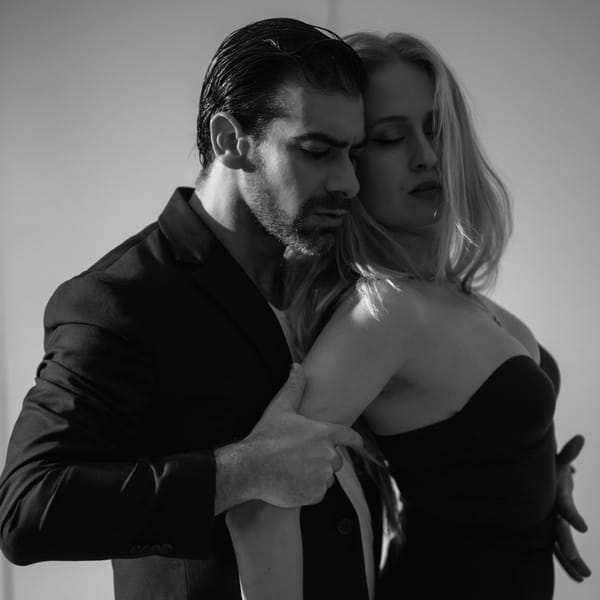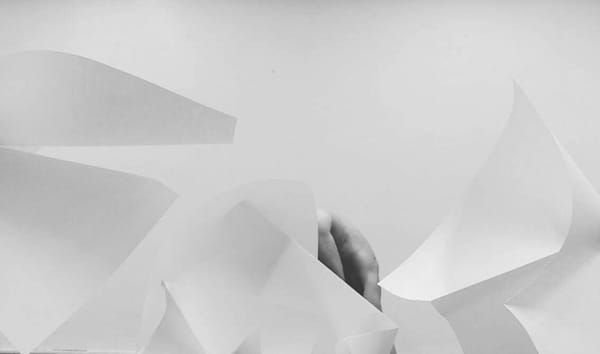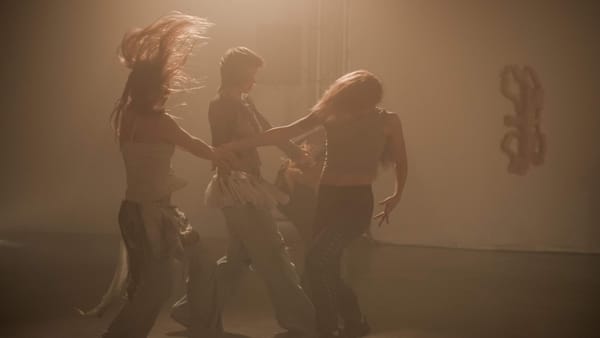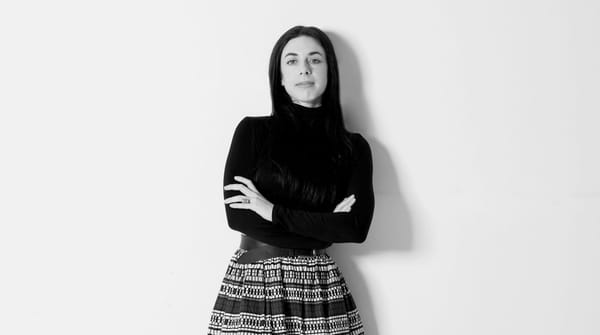The Physics of Letting Go
By Suzanne Fischer — On witnessing a paper performance at Munich's Brandhorst Museum.
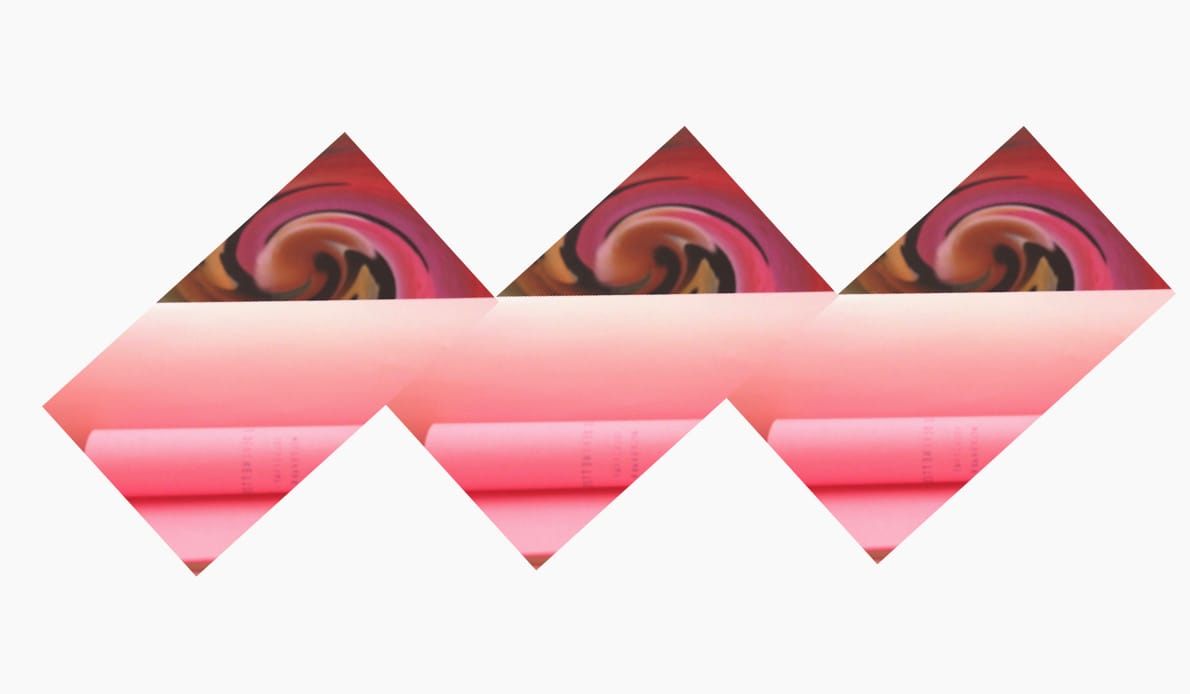
by Suzanne Fischer
Embodied language meets pink paper—
a smooth takeoff into the flow,
enhanced by the whispering wind.
Occasionally, severe body instructions cross our path. Most of them sound strange, like a military command to move horizontally, two by two, or in three-four time. Splitting like a cell, or lining up in a Fibonacci sequence. Climbing walls or navigating other kinds of obstacles.
Instructions for a mind-body.
Rules that keep—not the world—but at least our body in motion. At best, in connection and interaction with another body: the body of a group, or even the body of an object.
And on very rare occasions, an air current raises a sheet of paper like a whirl of leaves, dispelling every notion of bones, muscles, and flesh under pressure. The bias of the tissue is not blushing, but rosy. Pink. A rectangle underground, roughly two feet by one and a half, signed by a cascade of black letters: directions, bends, loops, knots. Words and expressions that echo in your limbic system as a reader.
Suddenly, a voice asks from the staircase:
“Do you trust me?”
One floor up, a woman with a pink strand of hair grasps the rosy paper with both hands and replies,
“Yes, I do.”
“Let it fall,” says the voice.
She opens her palms. The pink paper makes a nosedive, then begins to rise, driven by invisible forces. Grammage forms waves. Movement enrolls in paper and carries the sheet downstairs, step by step, continuously reshaped by the architecture of the wooden staircase.
In a kind of slow motion, the pink paper adapts its density to every single unevenness. The tissue snuggles against the fabric of the building effortless fluidity in the middle of the stairwell. A whistle, like a whispering gust, beats the rhythm of this song. Waved like seagrass by the wind, the paper folds and unfolds in eternal formations. It exudes a scent of freshly melting snow at a salty seaside, mixed with vetiver and rosemary. An evaporation of randomly moving particles.
The sheet follows its own rules until it makes the grade and spins at the half landing. There, it reaches out toward a pile of 1,000 sheets: a multiplicity of available body movements, delicate and fluently articulated.
Observe the landscape in the space: a random performance of a vivid paper sheet at the opening of The Future Body in Recent Past exhibition at Munich's Brandhorst Museum in 2022—moving bodies.
Human bodies are based on different flows: the lymph flow, the blood flow, and the information flow within the limbic system. Sometimes a body flows outward. Sometimes two bodies flow into each other. Eventually, they pour out into water as pulsing organisms until they evaporate.
Those moments of complete immersion and awareness: that’s what creates flow.
“Could you feel it?” the voice asks.
And the woman standing on the floor below nods.
She unwraps herself from an imaginary sheet of paper.
Her pink strand of hair forms an ampersand—
and now the flow is yours.
Suzanne Fischer, Passionate about literature, contemporary dance, and visual media, Suzanne explores language as fluid expression and nuanced communication. With a keen sense for tone and context, she translates across cultures—attuned to rhythm, imagery, and the movement between words.


